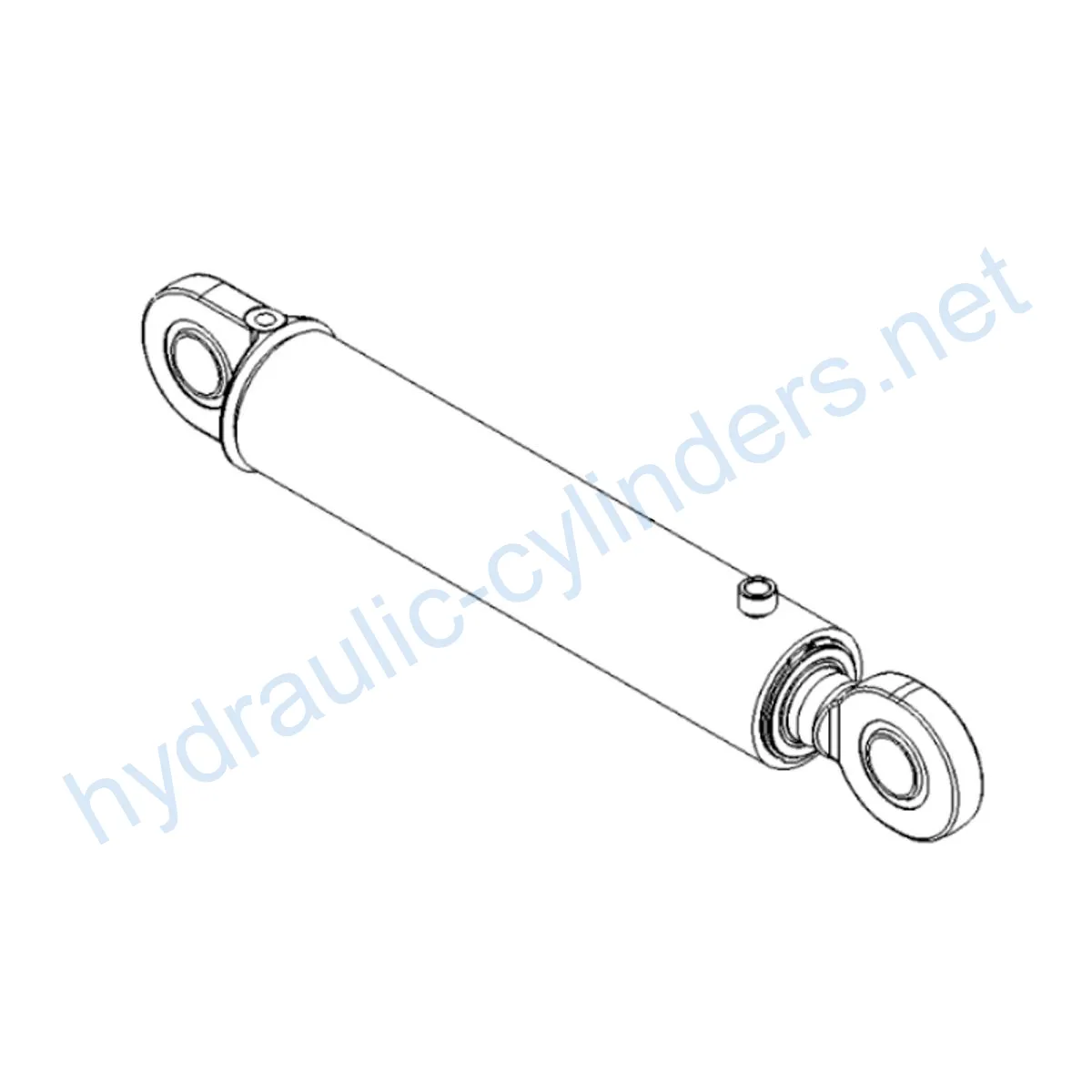Replacement Of F675409 Hydraulic Cylinder Rod
As one of the hydraulic cylinders manufacturers, suppliers, and exporters of mechanical products, We offer hydraulic cylinders and many other products.
Please get in touch with us for details.
Mail:sales@hydraulic-cylinders.net
Manufacturer supplier exporter of hydraulic cylinders.
Replacement Of F675409 Hydraulic Cylinder Rod
Replacement Of F675409 Hydraulic Cylinder Rod is a hydraulic cylinder designed to replace the damaged or worn-out rod in various models of equipment, including 1010E, 1070E, 1070G, 1110E, 1110G, 1170E, 1170G, 1210E, 1210G, 1270D, 1270E, 1270G, 1470D, 1470E, 1470G, 1510E, 1510G, 1910E, and 1910G.
Specifications
- Weight: 38.93 lb
- Height: 2.8 in
- Width: 5.3 in
- Length: 31.5 in
Features
- Improved equipment performance: Replacing damaged or worn-out hydraulic cylinders can restore the normal operational capability of the equipment, ensuring its performance in various applications.
- Enhanced safety: Regularly replacing hydraulic cylinders can reduce safety hazards caused by cylinder failures, ensuring the safety of operators and equipment.
- Overload protection: New cylinder designs often incorporate better overload protection mechanisms, enhancing safety.
- Quick installation: Modern hydraulic cylinders are designed for easy installation and replacement, minimizing downtime.
- Standardized components: Many hydraulic cylinders are standardized products, making it easier to obtain replacement parts in the market.
We are capable of manufacturing this product, offering perfect replacements for these hydraulic cylinders.
Applications
- Excavators: Hydraulic cylinders in the boom or bucket of excavators may get damaged due to prolonged use or overload, requiring replacement to restore normal operation.
- Cranes: Hydraulic cylinders in the crane’s boom are prone to wear and tear from frequent lifting and lowering, necessitating regular replacement for safety.
- Tractors: Hydraulic cylinders in the front-end loaders of tractors may experience leaks or decreased performance during continuous lifting and tilting operations, requiring replacement.
- Harvesters: During harvesting, hydraulic systems endure high pressure, and cylinders may get damaged due to fatigue, requiring timely replacement to maintain work efficiency.
- Automated production lines: Hydraulic cylinders are used to control robotic arms and other automated equipment. Cylinder failures can impact production efficiency and require immediate replacement.
- Die-casting machines: In high-pressure and high-temperature environments, hydraulic cylinders may experience decreased performance. Regular replacement ensures product quality.
- Mining equipment: Hydraulic cylinders are used for lifting and moving heavy objects in mining equipment. Due to harsh working conditions, regular inspection and replacement are necessary to avoid equipment failures.
- Bulldozers: Wear on hydraulic cylinders in the bulldozer’s blade can lead to a decrease in pushing ability, requiring timely replacement to maintain operational efficiency.
Maintenance Tasks
- Regular inspection
- Proper lubrication
- Seal replacement
- Calibration check
Proper installation, lubrication, and adjustment are essential. During installation, providing correct alignment guidance for the cylinder and recommending the use of appropriate installation brackets to secure the cylinder are advised. Recommended inspection, repair, and replacement procedures, along with parts replacement and rebuild services, can extend the lifespan of the hydraulic cylinder.
Safety Considerations and Environmental Factors
When using hydraulic cylinders, safety measures are crucial to prevent accidents and environmental hazards. Proper installation, maintenance, and adherence to safety protocols are essential to ensure the safe operation of the equipment and minimize environmental impact.
Fault Diagnosis and Common Issues
- Leakage: Hydraulic cylinders may experience leakage due to damaged seals or worn-out components.
- Poor performance: Cylinders may exhibit reduced lifting or pushing capacity, indicating internal damage or wear.
- Noise or vibration: Unusual noises or vibrations during cylinder operation may indicate internal faults or misalignment.
To diagnose and solve these issues effectively, it is important to provide troubleshooting tips, solutions, and preventive measures. Offering guidance on fault prevention can help minimize potential problems.

Design Considerations and Selection Criteria
When selecting hydraulic cylinders, several design considerations should be taken into account, including load-bearing capacity, sealing, durability, safety, and maintainability. Each aspect is crucial for optimal performance and longevity.
Sealing and Lubrication
Various sealing elements, such as piston seals and rod seals, are used in hydraulic cylinders. These seals are made of wear-resistant materials like polyurethane and nitrile rubber. The cylinder body and threaded ends undergo meticulous surface treatment to enhance wear resistance. Regular lubrication with appropriate hydraulic oil is necessary for optimal performance.
Regular Inspection and Preventive Maintenance
Regular inspection and preventive maintenance are essential for maintaining hydraulic cylinder performance and prolonging its lifespan. Proper installation, lubrication, and adjustment are key. Recommended inspection, repair, and replacement procedures, along with parts replacement and rebuild services, can help extend the lifespan of the hydraulic cylinder.
Installation Guide
Proper installation is crucial for the optimal performance and safety of the hydraulic cylinder. It is important to follow the correct installation procedures, align the cylinder accurately, and use suitable installation brackets to secure the cylinder in place.
Maintenance Tasks
- Regular inspection
- Proper lubrication
- Seal replacement
- Calibration check
Safety Considerations and Environmental Factors
When using hydraulic cylinders, safety measures are crucial to prevent accidents and environmental hazards. Proper installation, maintenance, and adherence to safety protocols are essential to ensure the safe operation of the equipment and minimize environmental impact.
Fault Diagnosis and Common Issues
- Leakage: Hydraulic cylinders may experience leakage due to damaged seals or worn-out components.
- Poor performance: Cylinders may exhibit reduced lifting or pushing capacity, indicating internal damage or wear.
- Noise or vibration: Unusual noises or vibrations during cylinder operation may indicate internal faults or misalignment.
To diagnose and solve these issues effectively, it is important to provide troubleshooting tips, solutions, and preventive measures. Offering guidance on fault prevention can help minimize potential problems.

Take a Tour of Our VR Factory:
Take a tour of our VR factory with the following
Hydraulic Cylinder Application:


